How to Get a Fountain Pen Dried Ink to Work Again
If your fountain pen is dry whenever you start to write, it's difficult-starting. Luckily, you can do multiple things to easily fix it. Here are my best tips.
How do yous ready a dry starting fountain pen?
- Try adjusting your grip
- Squeeze the cartridge until yous come across an ink driblet
- Shop it horizontally or facing down
- Clean the nib and feed with warm h2o
- Soak the pen in fountain pen affluent overnight
- Use a thinner ink (or dilute the ink yourself)
- Tape off the breather hole
- Make clean information technology ultrasonically
- If it's still hard-starting, adjust the tines
- Shine the nib using micro mesh
Below, I'll explicate each of those solutions in more than detail. But first, I desire to go over the reasons your fountain might be hard-starting. Some of them are dead uncomplicated - you may want to hit yourself in the caput.
In this article:
- Why Is It Hard Starting in the Starting time Place?
- 10 Like shooting fish in a barrel Fixes Y'all Tin can Effort Now
- Diagnosing Starting Problems
Why Is It Hard Starting in the Kickoff Place?
When y'all're dealing with starting bug, information technology is crucial to diagnose the trouble correctly. You don't want to start adjusting your tines - in most cases, that will do more than impairment than adept. There are two means to go about fixing the trouble:
- Selective: you diagnose correctly and merely fix what needs fixing
- In the right order: you lot gear up in order of least intrusive to most intrusive
By fixing stuff in the right society, you prevent to exercise major irreversible damage to your pens. So in my listen, going through the fixes one past 1 until your pen works is a slap-up strategy. Nevertheless, if you're interested in fixing other pens in the future as well, the better approach is to learn to diagnose starting issues correctly.
Is It Normal for Fountain Pens To Dry Showtime?
Whenever you're experiencing starting problems with your fountain pen, at that place is something wrong. That is unless you haven't used your pen for weeks or months on cease. A pen that'south not in use for a long catamenia will eventually dry and just needs a good clean.
Possible Reasons for a Hard-Starting Fountain Pen
- Y'all're holding the pen at an odd angle
- You're storing the pen with the cap facing up
- Yous're using the wrong paper
- The breather hole is also big, drying out the pen
- The feed is chock-full, restraining ink catamenia
- The ink is too viscose
- The nib is misaligned or damaged (baby-bottom)
- The nib and feed are misaligned
- The cap doesn't seal properly
I want to just quickly touch on using the right newspaper. I will discuss the rest of the reasons below. Fountain pens won't write well on fatty newspaper. If you have rested your hand on this particular piece of paper, try using a fresh sheet, or if the newspaper is fatty by nature, try getting something less so. Likewise, course newspaper can be problematic. Ideally, you want to use a smooth and thick paper. I prefer Rhodia Le R, which is a classic notepad for fountain pen writers. Other good brands are Clairefontaine and Leuchturm, to a lesser extent.
10 Easy Fixes You lot Can Attempt Now
Try adjusting your grip
Some fountain pens have a sweet spot on the pecker: especially Fine nibs tend to be pretty unforgiving. Try rotating the pen just a little bit to both sides. If that doesn't work, change the angle to the paper. Most fountain pens need to be held at a slant and won't write if you agree them at a 90-caste angle to the paper.
If there's still no ink coming out, check whether you can write after dipping the nib in some ink. If it writes, your problem is most likely with the feed, not with your technique or the nib.
If yous don't take any ink standby, you can clasp out a standard ink cartridge into a plastic loving cup. I have these white plastic cups beside my desk for pen maintenance; information technology'due south a great tip if you lot frequently need to clean or maintain your pens.
Squeeze the ink cartridge
Sometimes the ready is actually easy: yous unproblematic unscrew the fountain pen department from the body, and squeeze the ink cartridge. Look for an ink driblet to form at the nib's lesser. Pro tip: put a piece of sacrificial paper on your desk or you might leak on your desk. If this fixes your problem, bravo, it was merely a case of dry ink clogging upward the cartridge or feed. The problem might render shortly though, as dry out ink has a habit of creating trouble until you clean the pen properly.
Store it horizontally or facing down
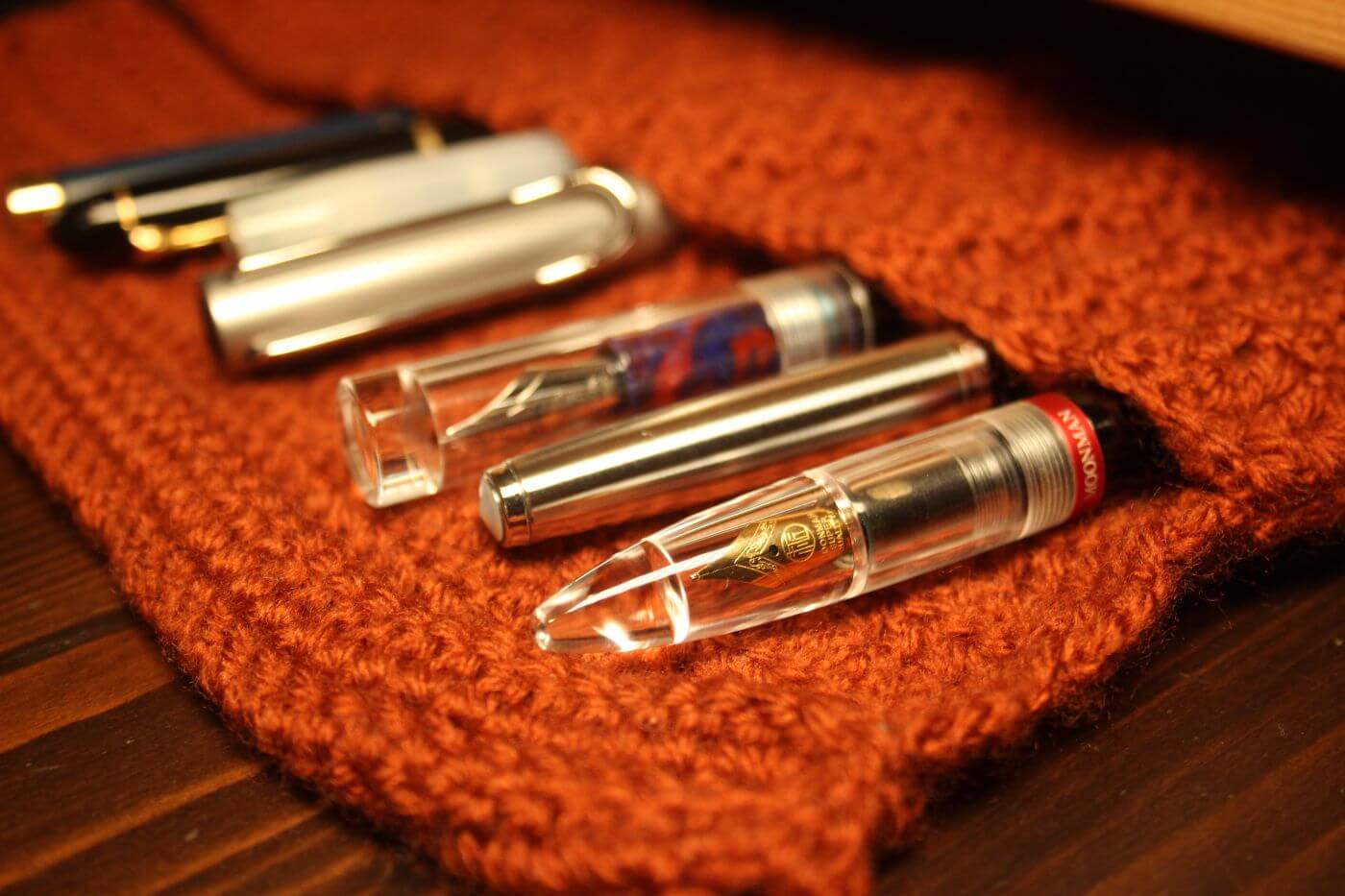
Some people store their fountain pens with the cap facing upward, as you would with other pens. This will prevent the ink from saturating the feed. Since it takes a while for the ink to travel downwards (sometimes it tin can take a infinitesimal or two!), information technology won't start immediately. The fix is very simple. Store your pens horizontally or place them cap downwardly from now on. A give-and-take of communication: make sure you don't drop them in your pen cup, tapping the cap ... That volition ensure a right mess inside your cap.
Clean the nib and feed with lukewarm water
In nearly cases, a hard starting fountain pen comes down to a feed problem. The feed is an intricate black plastic labyrinth that controls the leak of ink to the beak. Over fourth dimension, it can clog up with ink paint, dust, or fifty-fifty paper particles. Every fountain pen needs a good make clean now so.
Luckily, this is a super uncomplicated process. Get out your cartridge or converter, rinse the nib and grip section nether the tap (utilize lukewarm water). In some cases, this might practise the fox. If not, you want to soak the pen overnight.
Soak the pen in fountain pen flush overnight
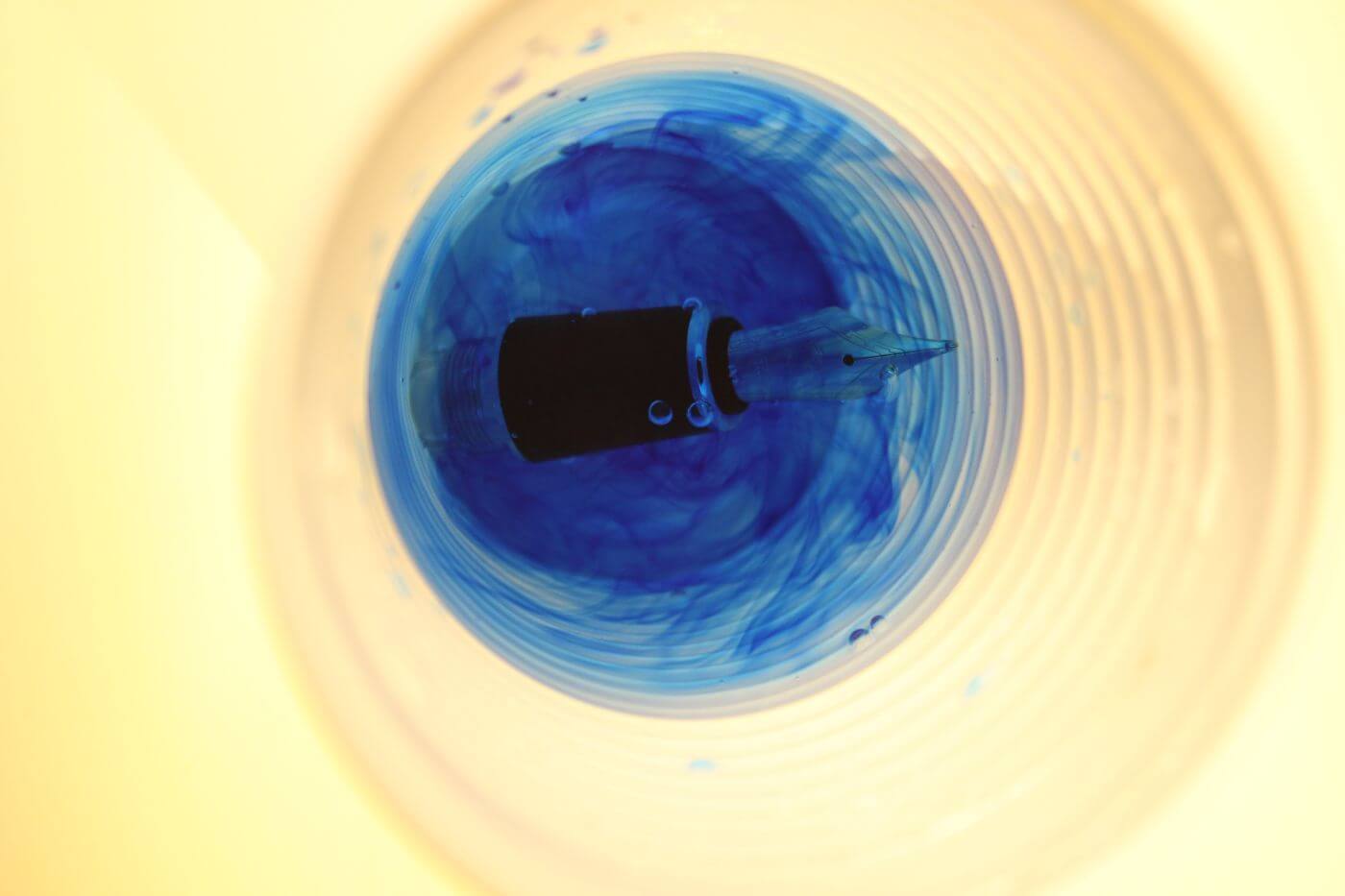
When the feed is clogged upwardly desperately, you want to soak the pen overnight. I recommend trying to soak it in regular tap water start, earlier resorting to pen flush. In most cases, a long soak will dissolve any remaining ink pigment. After the soak, brand sure to flush the feed by using an ink converter or a syringe bulb (cheque on Amazon).
If this doesn't set up your problem, you might want to use pen flush. Yous can go pen flush at about pen stores, simply you can also easily make your own. Pen flush is a bit more aggressive, and some pens don't similar it, then I use it equally a last resort but.
You tin use this well-known pen affluent from Amazon or create your own for $2.
Use a thinner ink (or dilute the ink yourself)
Pens utilise unlike feed designs. Some pens are wetter, pregnant they accept larger ink channels in the feed, others are dryer, meaning they have smaller ink channels in the feed. If your pen keeps drying out, even after cleaning with regular use, chances are your ink is to viscose for this particular pen. The feed just can't handle all the pigment.
Switching out to a thinner ink will probably practice the play a joke on. Most of the well-known brands (Parker, Waterman, Lamy) carry black and blue inks that are generally pretty thin. If you lot don't take any other inks at paw, yous could also dilute the ink yourself. Simply mix your ink in a plastic cup with some droplets of water. You just demand a tiny flake of water to dilute it.
Yous could also try lubricated ink instead. These inks contain a pocket-sized corporeality of lubrication to meliorate the ink menstruation. I've previously compiled a listing of my favorite lubricated inks.
Record off the breather pigsty
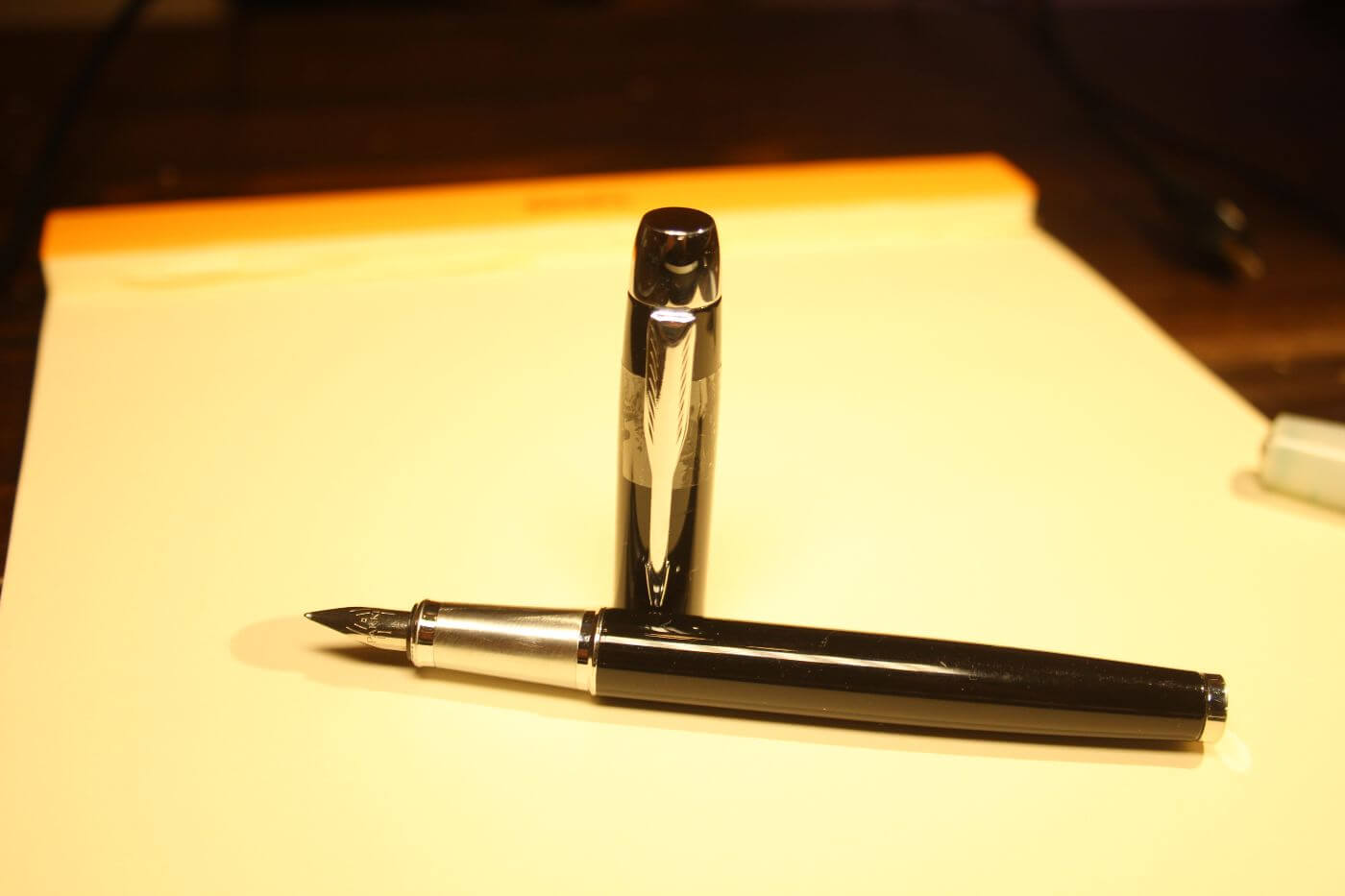
Virtually fountain pens accept a breather hole in the greatcoat. The breather hole is a tiny hole that is used breath, which means to get rid of condensation. When the environs temperature changes, pens start to condensate, burping up h2o from their ink reservoir. If the sabbatical hole is as well large due to a blueprint flaw, you lose too much water, drying out the feed department over and over again.
I really have a pen that does this and is infamous for this tiny design flaw. The Parker IM is a bloody dry pen in and of itself. But the sabbatical hole is just too damn large, drying it out after but one or two days.
Luckily, there is a very easy fix: put a tiny fleck of record over the breather hole. With my Parker IM, it is located underneath the clip. If y'all hold information technology against light and hold it at an angle, yous tin can only see it. Try information technology, record her up and run into what happens. For me, it worked wonders.
Clean it ultrasonically
This step is optional. If all of the higher up doesn't work, you might want to do a more thorough cleaning. Specialists utilize an ultrasonic cleaning machine that uses sound waves to clean every nanometer of the pen. You can get your own, merely y'all could also bring information technology to a fountain pen specialist, who volition most probable take one already and charge you a minor fee for the make clean.
Vintage pens might not similar ultrasonic cleaning, so you lot desire to check before using this method.
If it'south all the same dry starting, adjust the tines
If all of the in a higher place doesn't work, y'all might have a nib problem. Yous could save yourself a lot of trouble by checking out the nib showtime, simply let'south say you have eliminated whatever problems with your technique, materials, or the feed. The tines might be misaligned.
In that location is no pretty way to realign tines: you simply accept to bend them until they are perfectly aligned once more. You lot don't desire to do this without a skilful loop or magnifying drinking glass, and a proper pair of tweezers. If this is a particularly valuable pen, I highly recommend handing information technology over to a specialist, as these kinds of bill tweaks may very well ruin your pen forever.
Smoothen the nib using micro mesh
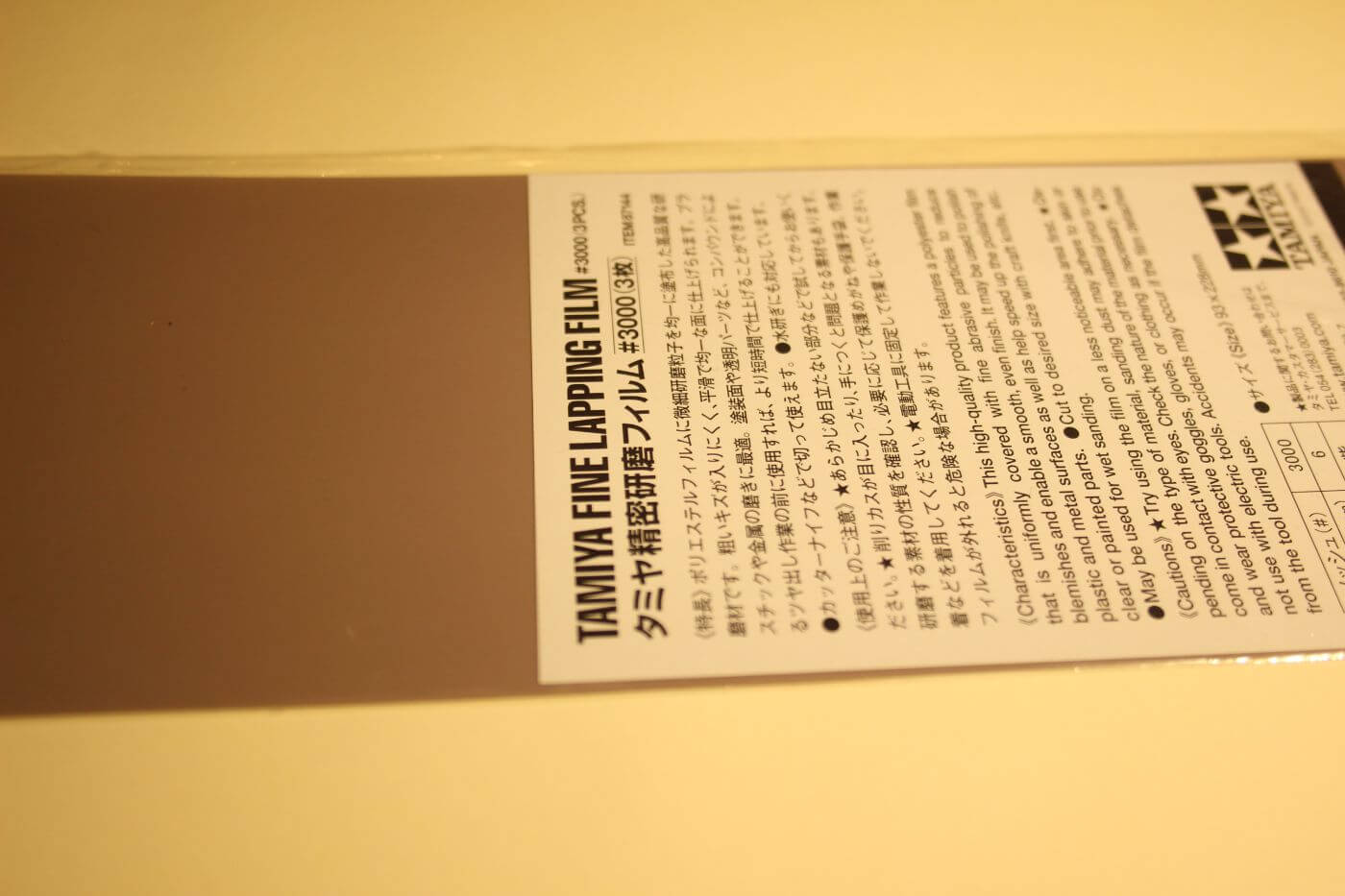
If you are sure it is a nib problem, but the tines are aligned properly, yous could exist dealing with babe's bottom. To ready baby's bottom, y'all'll accept to polish the bill until information technology regains its original straight tine border. I use micro mesh to do this. It is affordable and a must-have for every serious fountain pen owner. You tin become it at the pen specialist, or if y'all don't have access to a good fountain pen store, yous could probably become it at a model train store. You can also get Micro-Mesh at Amazon.
You lot smooth the nib by wetting the nib (or by using the ink in the feed, if it flows properly), and writing an eight or infinity symbol over and again on the micro mesh. You desire to agree the pen like y'all normally would, at your normal bending, and apply just a little flake of pressure. Smooth out the nib until the babe'south bottom is no longer visible or your hard starting bug are gone.
You can observe which products I personally utilise for fixing nib bug hither.
Diagnosing Starting Issues
Whenever we're dealing with starting problems, y'all may bargain with one of three areas (in order of easiest to fix to hardest to fix):
- You operate the pen incorrectly: there'southward something incorrect with your technique
- Y'all use the wrong materials: in that location'due south something wrong with the environment
- The pen has blueprint flaws or is damaged: there's something wrong with the pen
All possible problems fall under 1 of these three categories. Interestingly, I always tend to skip the first two and blame the pen for its problems (which are conspicuously its, and non my fault. Yet, the first two bug are the easiest to fix, so it pays to bank check them first.
How do you diagnose a hard starting fountain pen?
- Inspect whether the cap seals properly
- Inspect the nib and check for tine misalignment or baby'south bottom
- If you doubtable baby's lesser, the pen should write under extra pressure level
- Inspect the feed by dipping the nib in ink and cheque whether the pen writes
- If this fixes the problem, y'all nigh probable accept a feed problem
Checking the cap
When trying to figure out what the problem is, yous want to do a couple of things. The showtime matter I advise doing is checking the cap. In some cases, the pen dries out because the cap doesn't seal properly. You lot could have damaged the cap by dropping it, for instance.
To check the cap, yous want to endeavor to wiggle it. Most caps jerk a little, but you should merely be able to move it side to side only a tiny bit. If the cap doesn't seal, you lot should go a new cap, which with most entry-level pens simply means getting a new pen. Even so, don't forget to check the warranty: you might become lucky.
Checking the nib
Adjacent, you want to take a expect at the bill of the pen to meet if it's damaged or misaligned. You can use a loop or magnifying glass to do this. The nibs need to be aligned and take a somewhat direct edge. Y'all want to check the top of the nib, and the side view.
If yous can see any misalignment, you want to check for two things:
- Tine misalignment
- Baby's bottom
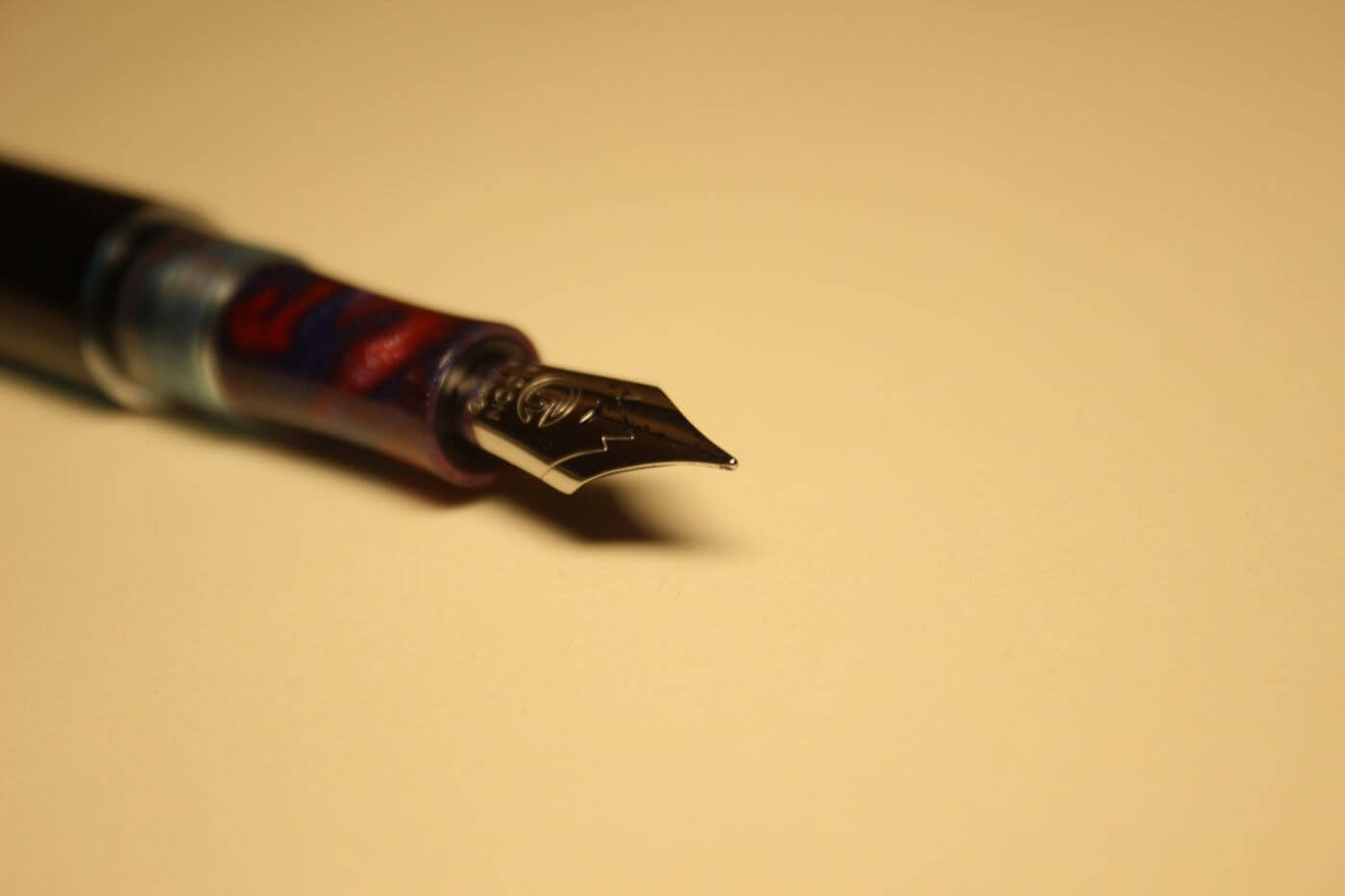
Baby's bottom
Look at the nib from above using a loop. If the 2 tines don't stop in a straight edge but take a crescent dip to them instead, that'due south what'south called 'baby'southward bottom' - because it's a tiny bottom! It'due south a funny proper noun for an annoying problem (although baby's bottom can be a potentially annoying problem also, equally many young diaper-wiping parents might agree). If you encounter a tiny lesser, that volition near likely exist your problem. Later on you meet this crescent dip, another way to verify the problem is to endeavour to write while putting a lot of pressure on the pen. If it writes properly, you accept infant'southward lesser.
A neb with baby's lesser won't lay ink on the paper, as it only touches the paper with its outermost edges. There'southward not enough contact area to lay down ink.
Please note: but apply pressure after y'all have diagnosed baby'south bottom visually. You lot get baby's bottom past putting besides much pressure level on the pen in the first place, forcing the tines outward and wearing out the inner sides of the tines.
Tine misalignment
Tine misalignment is easy to diagnose. If you look at your pen from the side, the tines should exist perfectly level. They shouldn't be crooked, with ane being higher than the other. If that is the instance, you are dealing with a tine misalignment problem.
In most cases, you get tine misalignment after dropping the pen on the beak or tapping it to get ink flow starting. You shouldn't tap your fountain pen on the nib!
Narrowing information technology downwards to feed or technique
If in that location is no visible pecker damage (in almost cases that won't exist the problem), you want to attempt narrowing it down to either the feed or ink or the style y'all use the pen. To practise this, you can try dipping the neb in ink and writing with the pen.
If it writes properly, you most probable have a feed problem (this is the trouble in most cases). If it doesn't write, yous are probably using the pen incorrectly.
The feed is the section that provides ink to the nib. It's the ribbed part, made of black plastic, under the nib.
Did you lot detect the answer to your specific question?
👍 7 👎 1
Source: https://onepenshow.com/pens/fix-dry-starting-fountain-pen
0 Response to "How to Get a Fountain Pen Dried Ink to Work Again"
Post a Comment